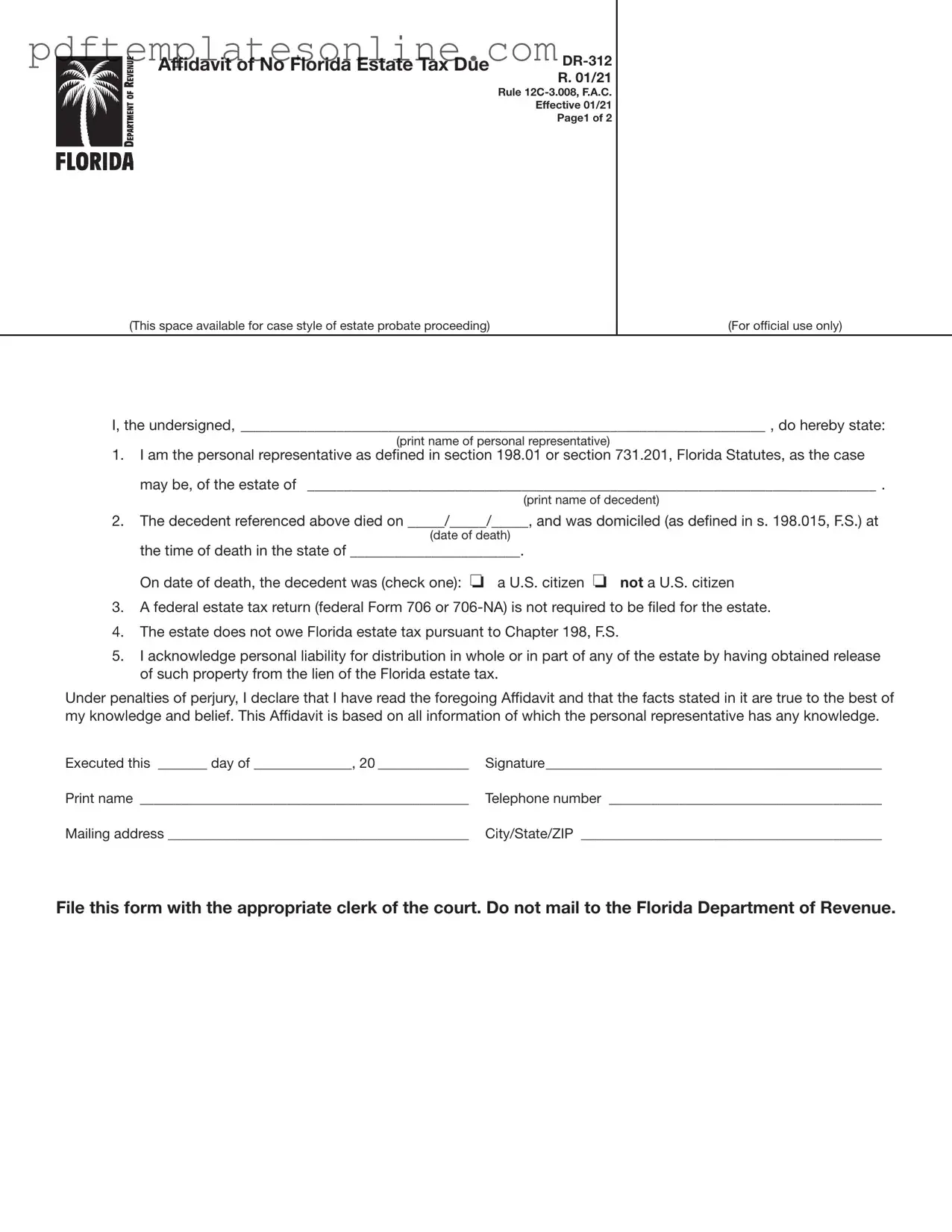Filling out the FL DR-312 form can be straightforward, but many people make mistakes that can lead to delays or complications. One common error is failing to include the correct name of the decedent. This name must match official documents exactly. Any discrepancies can cause issues when the form is processed.
Another frequent mistake is neglecting to provide the date of death. This date is crucial for establishing the estate's tax status. Without it, the form cannot be validated. Additionally, some individuals forget to check the box indicating whether the decedent was a U.S. citizen. This detail is essential for determining the estate's tax obligations.
Many people also overlook the requirement to sign the affidavit. A missing signature renders the form invalid. Furthermore, not providing accurate contact information can lead to communication issues with the court or tax authorities. It’s vital to ensure that the telephone number and mailing address are correct.
Another pitfall is failing to file the form with the appropriate clerk of the court. Submitting it to the Florida Department of Revenue instead will result in rejection. It’s important to know where to file the form to avoid unnecessary complications.
Some filers mistakenly assume that the DR-312 can be used for estates that are required to file federal Form 706 or 706-NA. This is incorrect. The DR-312 is only for estates that do not need to file these federal forms. Misunderstanding this requirement can lead to significant issues.
Additionally, individuals sometimes forget to include the case style of the estate probate proceeding in the designated space. This omission can delay processing. It's crucial to fill out every part of the form accurately and completely.
Another common error is not double-checking the information before submission. Simple typographical errors can lead to significant delays. Always review the form for accuracy before filing.
Lastly, some filers do not keep a copy of the submitted form for their records. This oversight can create problems later if questions arise regarding the estate's tax status. Maintaining a copy ensures that you have documentation if needed.
By being aware of these common mistakes, you can ensure that your FL DR-312 form is completed accurately and submitted without issues. Take the time to review your submission carefully, and consult with a professional if you have any doubts.
